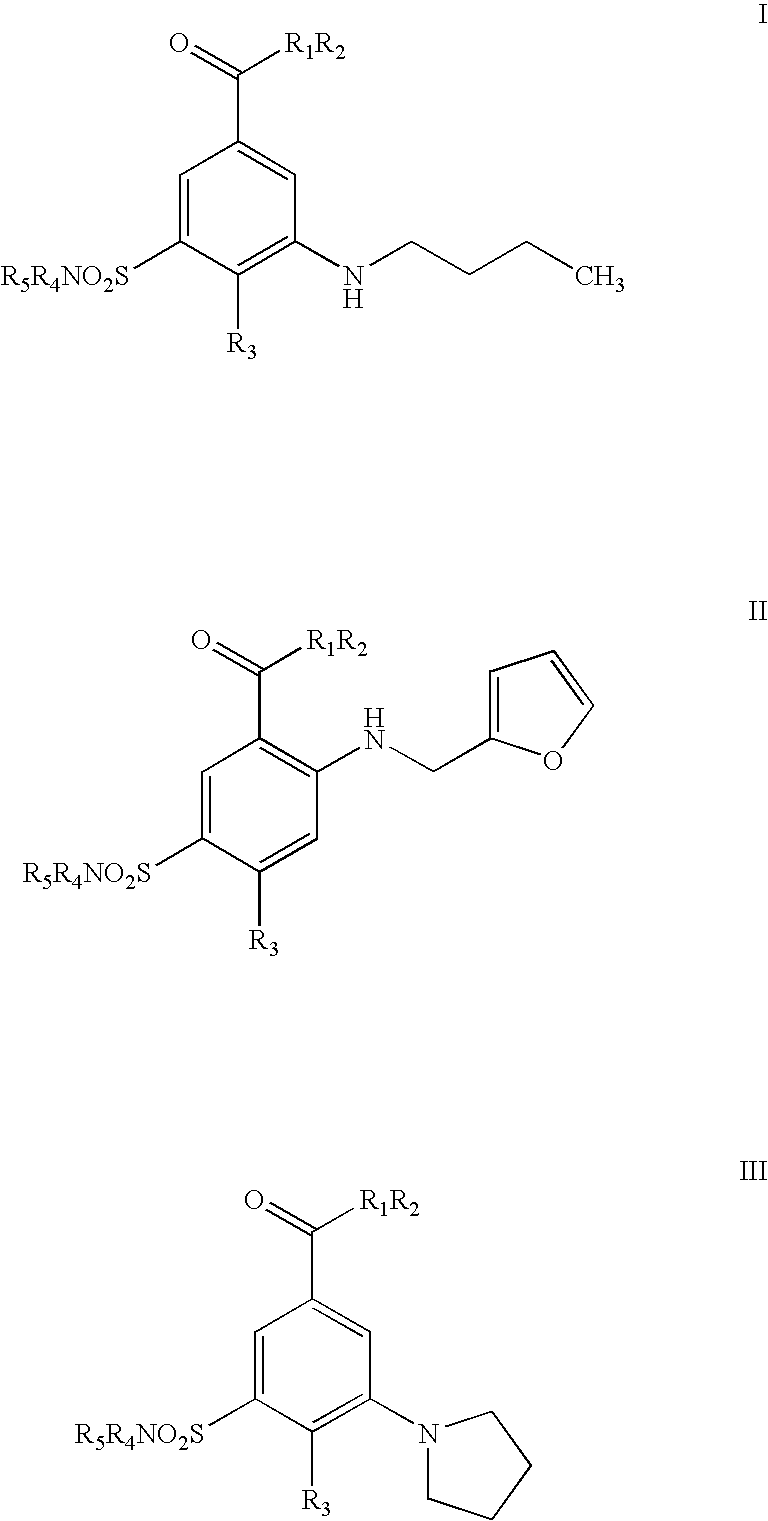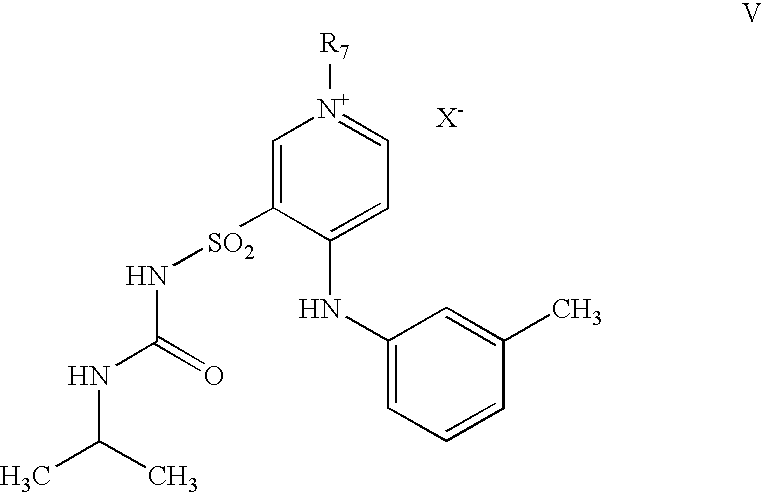Methods and compositions for the treatment of neuropsychiatric disorders
- Summary
- Abstract
- Description
- Claims
- Application Information
AI Technical Summary
Benefits of technology
Problems solved by technology
Method used
Image
Examples
example 1
Methyl 3-Aminosulfonyl-5-butylamino-4-phenoxybenzoate (Bumetanide Methyl Ester)
[0130] To a slurry of bumetanide (1.2 g, 3.29 mmol) in methanol (12 mL) under nitrogen, was added a mixture of thionyl chloride (70 uL) in methanol (6 mL) over 5 minutes. After stirring for 5 minutes the reaction mixture became soluble. The reaction was stirred for an additional 30 minutes, at which time the reaction was complete as determined by thin layer chromatography (TLC). The methanol was removed under reduced pressure and the residue was brought up in ethyl acetate and washed with saturated sodium bicarbonate, water and brine. The ethyl acetate was dried over anhydrous magnesium sulfate and concentrated to yield 1.1 g (89%) of methyl 3-aminosulfonyl-5-butylamino-4-phenoxybenzoate as a white solid.
example 2
Cyanomethyl 3-Aminosulfonyl-5-butylamino-4-phenoxybenzoate (Bumetanide Cyanomethyl Ester)
[0131] Bumetanide (1.0 g, 2.7 mmol) was dissolved in dimethylformamide (DMF) and chloroacetonitrile (195 uL, 2.7 mmol) was added followed by triethylamine (465 uL). The reaction was heated to 100° C. for 12 hours, at which time TLC and liquid chromatography-coupled mass spectrometry (LC / MS) indicated the reaction was complete. The reaction was cooled to room temperature, brought up in dichloromethane and washed with water, saturated with ammonium chloride and reduced to a slurry. To the slurry was added water (25 mL) and crude product precipitated as an off white solid. Pure cyanomethyl 3-3minosulfonyl-5-butylamino-4-phenoxybenzoate (850 mg) was obtained via recrystallization in acetonitrile.
example 3
Benzyl 3-Aminosulfonyl-5-butylamino-4-phenoxybenzoate (Bumetanide Benzyl Ester)
[0132] Bumetanide (1.15 g, 3.15 mmol) was dissolved in dimethylformamide (DMF, 10 mL) and benzyl chloride (400 uL, 2.8 mmol) was added followed by triethylamine (480 uL). The reaction was heated to 80° C. for 12 hours, at which time TLC and LC / MS indicated the reaction was complete. The reaction was cooled to room temperature, brought up in dichloromethane and washed with water, saturated ammonium chloride and concentrated to a thick slurry. To the slurry was added water (25 mL). The resultant solids were filtered and dried in a vacuum oven at 50° C. for 12 hours to yield 1.0 g (80%) of benzyl 3-aminosulfonyl-5-butylamino-4-phenoxybenzoate.
PUM
| Property | Measurement | Unit |
|---|---|---|
| Composition | aaaaa | aaaaa |
| Disorder | aaaaa | aaaaa |
Abstract
Description
Claims
Application Information
 Login to View More
Login to View More - R&D
- Intellectual Property
- Life Sciences
- Materials
- Tech Scout
- Unparalleled Data Quality
- Higher Quality Content
- 60% Fewer Hallucinations
Browse by: Latest US Patents, China's latest patents, Technical Efficacy Thesaurus, Application Domain, Technology Topic, Popular Technical Reports.
© 2025 PatSnap. All rights reserved.Legal|Privacy policy|Modern Slavery Act Transparency Statement|Sitemap|About US| Contact US: help@patsnap.com



